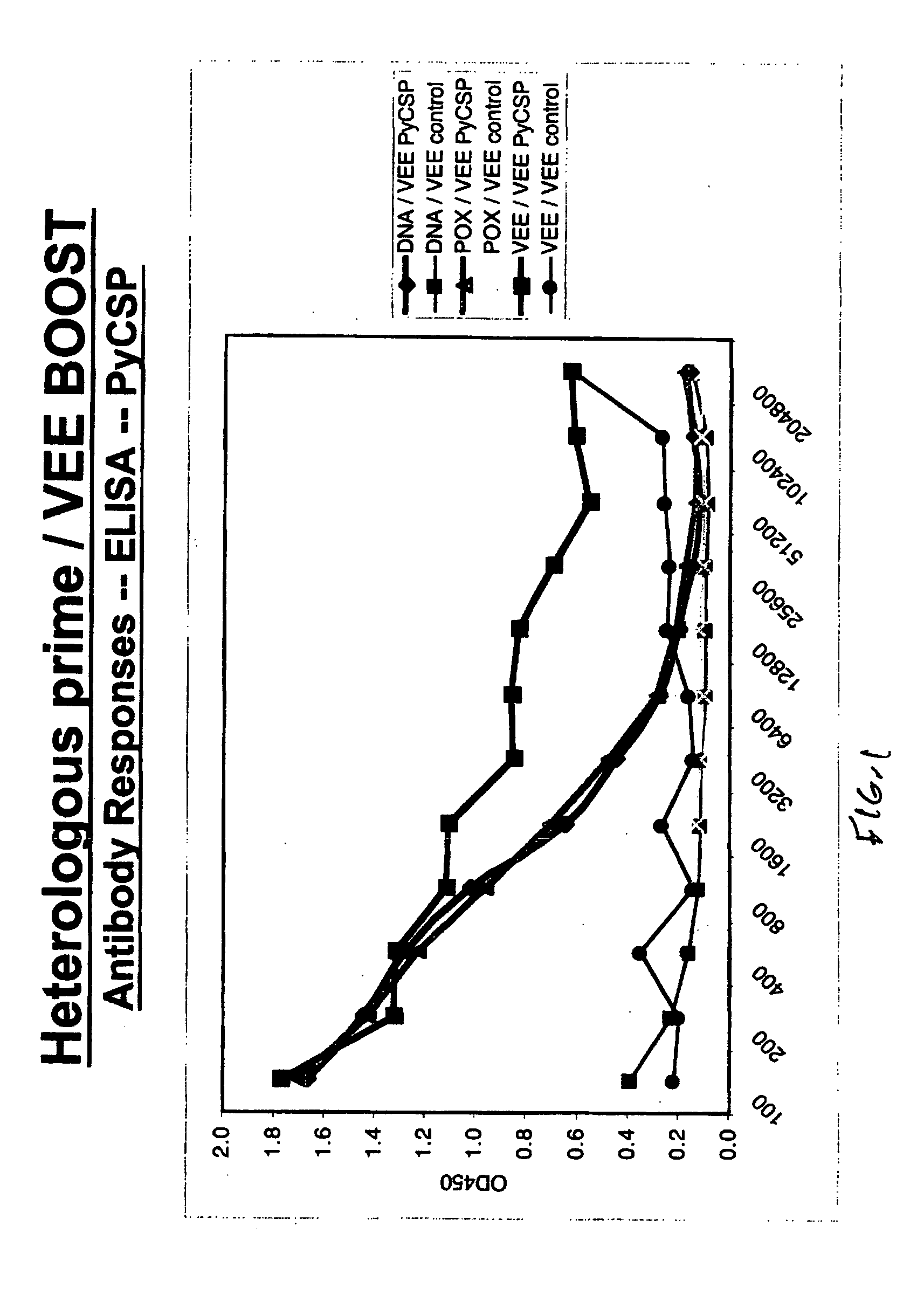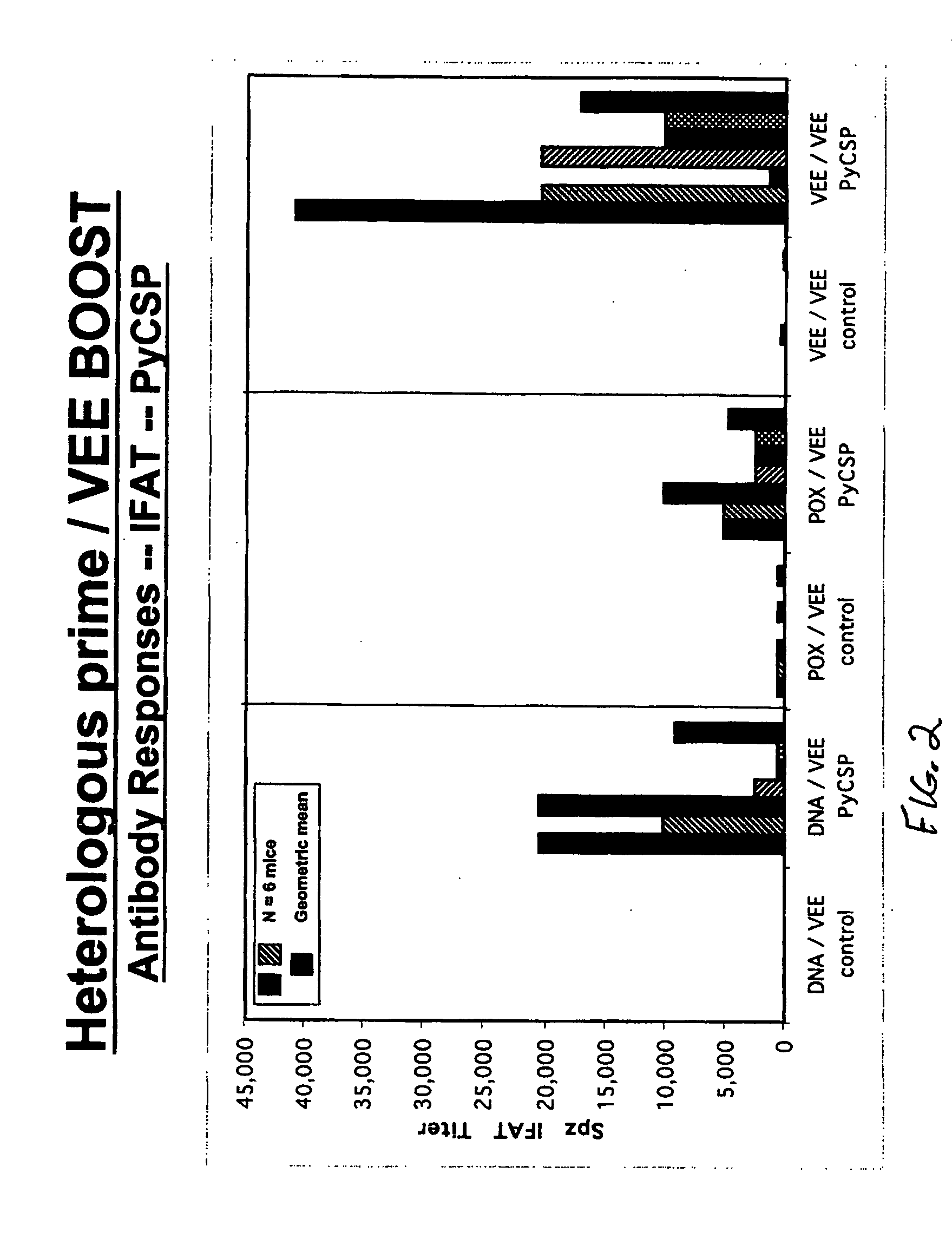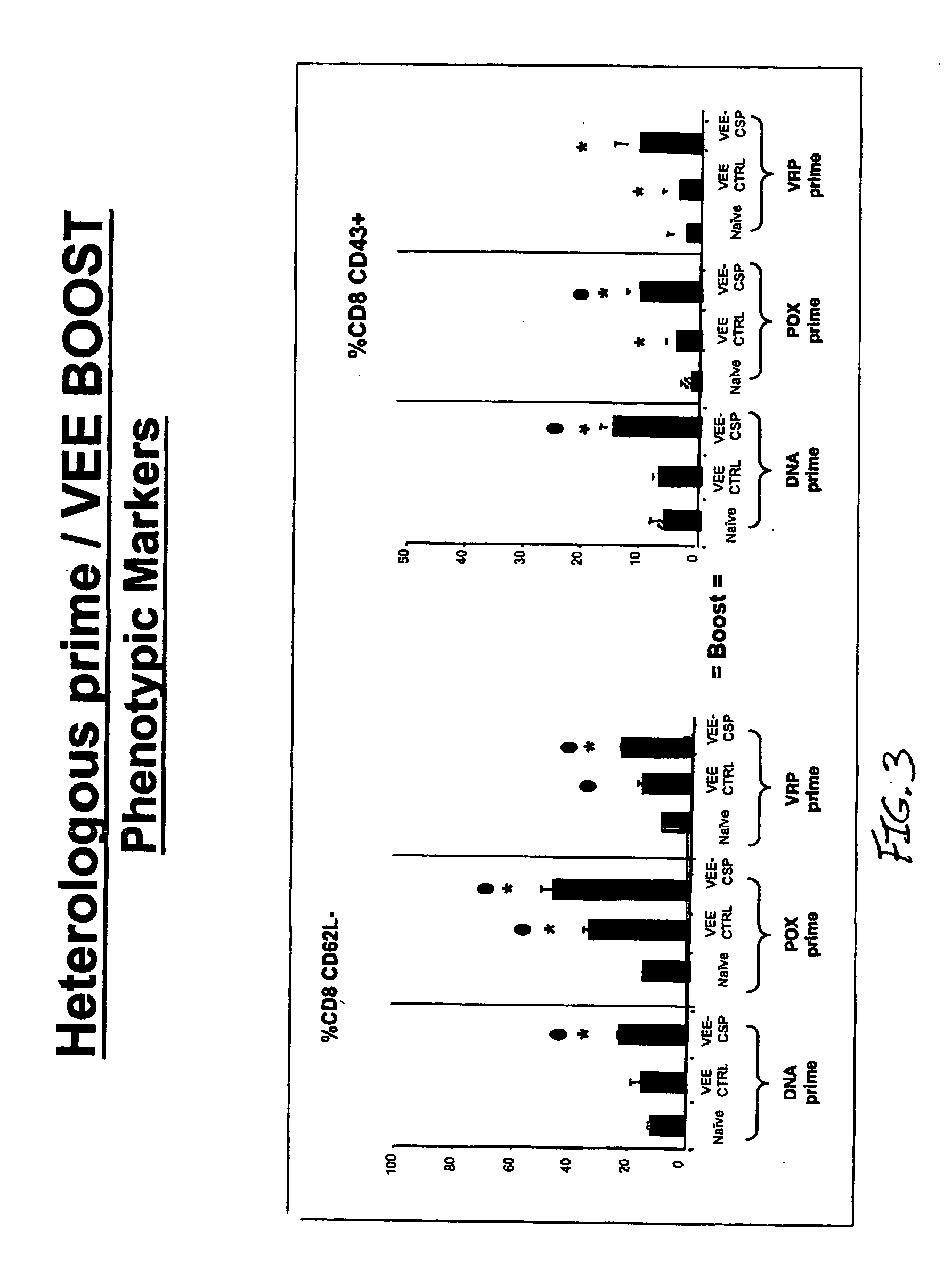Enhancement of vaccine-induced immune responses and protection by heterologous boosting with alphavirus replicon vaccines
a technology of alphavirus replicon and vaccine, applied in the field of immunogenic composition, can solve the problems of malaria posing an enormous burden on the public health in the world, unable to operate, and unable to fully recover, so as to enhance and broaden the immunogenicity and protect immunity
- Summary
- Abstract
- Description
- Claims
- Application Information
AI Technical Summary
Benefits of technology
Problems solved by technology
Method used
Image
Examples
working examples
Example 1
Boosting of Parasite-Specific and Antigen-Specific Antibody Responses by VEE Viral Replicon Particles in Heterologous Prime / VRP Boost Immunization Strategies in a Mouse Model of Malaria.
[0046]FIG. 1 demonstrates antigen-specific antibody responses against PyCSP induced by heterologous prime / VRP boost immunization strategies, as measured by ELISA.
[0047]FIG. 2 demonstrates parasite-specific antibody responses directed against PyCSP induced by heterologous prime / VRP boost immunization strategies, as measured by indirect fluorescent antibody test (IFAT) against P. yoelii sporozoites.
Study:
[0048] Female 4- to 8-wk-old AnNCr (H-2d) mice were obtained from The National Cancer Institute (Charles River Laboratories, Fredrick, Md.). In homologous VRP immunization regimens, groups of 6 mice were primed by 1M immunization with 1×106 VEE viral replicon particles expressing PyCSP and then boosted 6 weeks later with VEE viral replicon particles expressing PyCSP or an unrelated cont...
example 2
Boosting of Antigen-Specific Cell Mediated Immune Responses by VEE Viral Replicon Particles in Heterologous Prime / VRP Boost Immunization Strategies in a Mouse Model of Malaria
[0054]FIG. 3 demonstrates the expression of cell phenotypic and activation markers induced by heterologous prime / VRP boost immunization strategies, as assessed by multiparameter flow cytometry.
[0055]FIG. 4 demonstrates antigen-specific cell mediated immune responses to PyCSP induced by heterologous prime / VRP boost immunization strategies, as assessed by intracellular cytokine staining.
[0056]FIG. 5 demonstrates antigen-specific cell mediated immune responses to PyCSP induced by heterologous prime / VRP boost immunization strategies, as assessed by IFNg ELIspot.
Study:
[0057] Female 4- to 8-wk-old AnNCr (H-2d) mice were obtained from The National Cancer Institute (Charles River Laboratories, Fredrick, Md.). In homologous VRP immunization regimens, groups of 6 mice were primed by 1M immunization with 1×106 VEE ...
example 3
Protection Against Parasite Challenge by Heterologous Prime / VRP Boost Immunization Strategies in a Mouse Model of Malaria.
[0064]FIG. 6 demonstrates protection against P. yoelii parasite challenge conferred by heterologous prime / VRP boost vaccination strategies with PyCSP VRPs.
Study:
[0065] Female 4- to 8-wk-old AnNCr (H-2d) mice were obtained from The National Cancer Institute (Charles River Laboratories, Fredrick, Md.). In homologous VRP immunization regimens, groups of 12-14 mice were primed by 1M immunization with 1×106 VEE viral replicon particles expressing PyCSP and then boosted 6 weeks later with VEE viral replicon particles expressing PyCSP or an unrelated control gene (influenza HA). In heterologous prime / VRP boost immunization regimens, groups of 6 mice were primed by 1M immunization with 1×106 VEE viral replicon particles expressing PyCSP and then boosted 6 weeks later 1M with plasmid DNA encoding PyCSP or control DNA (100 ug), recombinant POXvirus expressing PyCSP or...
PUM
| Property | Measurement | Unit |
|---|---|---|
| diameter | aaaaa | aaaaa |
| diameter | aaaaa | aaaaa |
| volume | aaaaa | aaaaa |
Abstract
Description
Claims
Application Information
 Login to View More
Login to View More - R&D
- Intellectual Property
- Life Sciences
- Materials
- Tech Scout
- Unparalleled Data Quality
- Higher Quality Content
- 60% Fewer Hallucinations
Browse by: Latest US Patents, China's latest patents, Technical Efficacy Thesaurus, Application Domain, Technology Topic, Popular Technical Reports.
© 2025 PatSnap. All rights reserved.Legal|Privacy policy|Modern Slavery Act Transparency Statement|Sitemap|About US| Contact US: help@patsnap.com



